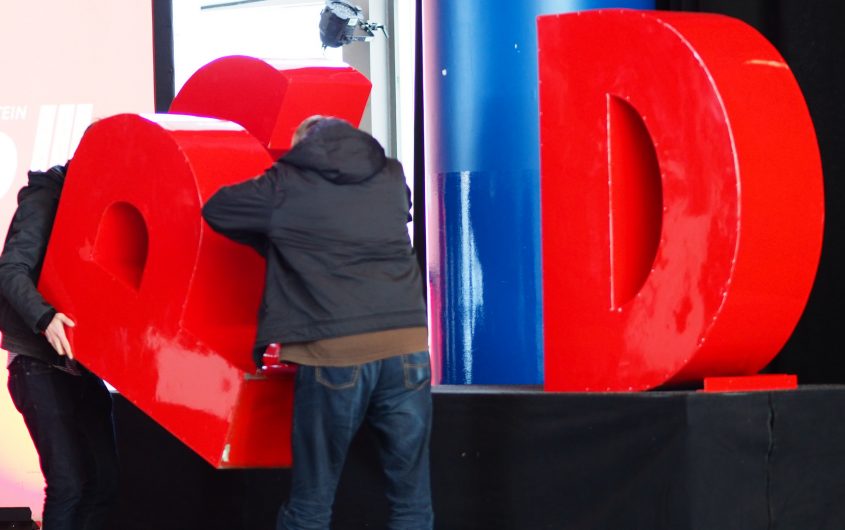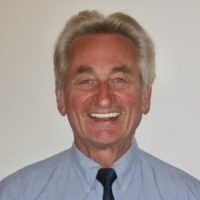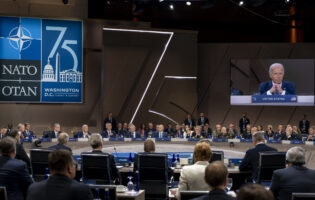
SPD Schleswig-Holstein via Flickr
Angst of Demise: The Dilemma of German Social Democracy After the Elections in Hesse

Dieter Dettke
Georgetown University
Dr. Dieter Dettke is a Non-Resident Fellow at AICGS and Adjunct Professor at Georgetown University.
Dr. Dettke served as the U.S. Representative and Executive Director of the Friedrich Ebert Foundation in Washington from 1985 until 2006 managing a comprehensive program of transatlantic cooperation. In 2006, he joined the German Marshall Fund of the United States as a Transatlantic Fellow and from September 2006 to June 2007, he was a Fellow at the Woodrow Wilson International Center for Scholars. His most recent book is “Germany Says ‘No’: The Iraq War and the Future of German Foreign and Security Policy,” published by theWoodrow Wilson Center Press and The Johns Hopkins University Press, Washington, DC, and Baltimore, 2009.
Dr. Dettke is a foreign and security policy specialist, author and editor of numerous publications on German, European, and U.S. foreign and security issues.
He studied Law and Political Science in Bonn and Berlin, Germany, and Strasbourg, France and was a Fulbright Scholar at the University of Washington in Seattle in 1967/68.
Surviving in a Multiparty Political Environment
After the recent disastrous election results in the states of Bavaria and Hesse, the ground is shifting rapidly for Germany’s Grand Coalition of CDU/CSU and SPD under Angela Merkel’s leadership. Her decision to step down as party leader of the CDU—but continue in to serve as chancellor—is just the first step in the process of an unravelling party system dominated in the past by the two large catch-all parties (Volksparteien) of Christian Democrats and Social Democrats. Together, the two Volksparteien used to be able to achieve the electoral support of over two-thirds of the votes in national elections. These days are over. Germany is now a multiparty state.
In Hesse, the two parties suffered losses in the neighborhood of 20 percent of the votes. With just 27 percent of the votes for the CDU, a loss of 11.3 percent, and 19.8 percent for the SPD, a loss of 10.9 percent, both parties together end up in a minority position. This means that he current Grand Coalition on the federal level is on a trajectory of losing the trust and the support of the German people.
Angela Merkel accepted the consequences and stepped down as party leader. The SPD is now under enormous pressure to act in a similar dramatic fashion in order to arrest its own downward spiral threatening to pull Germany’s oldest uninterrupted democratic party into the abyss. Having elected Andrea Nahles as the new leader just six months ago in the aftermath of the disastrous 2017 national elections, it would be another sign of weakness to change leadership again. Although such a step cannot and should not be excluded in the future, the primary task now must be to focus on the principles the SPD must stand for in the future beyond the current Grand Coalition. Rapid social, economic, political, and cultural change forces the SPD to increase the depth and scope of public discourse so that voters will have a better chance to know what the SPD represents. This will be a huge task requiring no less than rebuilding the necessary trust and confidence in the party’s capacity to prepare Germany for the future in a dramatically new economic, social, political, and cultural climate for political action.
Coalition Constraints
The bitter and hard reality for the SPD after the Hesse elections is that, in the new multi-party environment, the SPD will be at risk of being excluded from getting back into positions of power for a longer period of time. Winning a majority on its own is no longer a realistic option. It would require a miracle. Even the SPD and the Greens together will now have to struggle to get enough votes to govern. In 1998 it was possible to form an SPD-Greens coalition government on the national level. Today, such a development appears to be most unlikely in a multi-party system with seven players on the national level—counting the CDU and the CSU as different parties—including two extreme parties difficult to accept in a national government.
Since the political center of Germany is shrinking dramatically, possible coalition models for the SPD are now more difficult. With the Grand Coalition model just being voted down as an acceptable form of government, only two possible alternatives remain: A “Traffic Light Coalition” of SPD (Red), the Green Party (Green), and the FDP (Yellow) or a coalition of the SPD, Die Linke, and the Greens, known as a Red- Red-Green Coalition. The FDP has openly argued against joining a Traffic Light Coalition and would definitely prefer what is known as a “Jamaica Coalition” of CDU/CSU, FDP, and Greens (representing the black, yellow, and green Jamaican flag). A Jamaica Coalition would block the SPD from a position of power. Although this model failed on the federal level last year, the FDP would like to use such an opportunity on the state level first, and possibly on the federal level without Angela Merkel as chancellor in the future. In a Traffic Light Coalition, differences between the FDP, on the one hand, and the Greens and the SPD on the other, would be difficult to bridge, making such a coalition extremely unstable. Both the Greens and the FDP would most likely hesitate to put together a coalition government on such a basis.
A Red-Red-Green Coalition, although the preferred development within the left wing of the SPD, would have even greater obstacles to overcome if the three parties would have enough votes. For one, Die Linke would have to mature profoundly on the national level in order to be acceptable in government.
Another difficult question for the SPD will be how the Greens will chart their course in the future. The Greens have been the big winner in the Bavarian and Hessian elections and their support on the national level is increasing substantially. The have now become a party with deep government experience and have performed well on all levels. The state of Hesse used to be a typical SPD state (SPD Stammland), governed successfully by SPD leaders in the past, including in a coalition with the Greens that later led to the first SPD-Green Coalition on the national level under the leadership of SPD chancellor Gerhard Schröder.
This situation has now changed fundamentally—to the detriment of the Social Democrats. In Hesse last Sunday, 142,000 formerly SPD voters moved their support from the SPD to the Greens. At the same time, 108,000 formerly CDU voters moved over to the Greens, giving the party a formidable base of support to take on government responsibility on the national level. In SPD Stammland Hesse, the Greens ended up with just 94 more votes than the SPD, a fact that—as miniscule as it might sound—might require adjustments about who, in a coalition with Social Democrats, Greens, and the FDP, for example, would lead such a coalition in government. It is no longer a foregone conclusion that the SPD would lead such a coalition. If present trends continue, the Greens would move into a position of leadership also on the national level.
The “What-To-Do Dilemma” of the SPD
For the moment, the Social Democrats have excluded any leadership change as a way out of their electoral dilemma. The party also seems to be afraid of new elections, fearing that new elections might even drive support for the SPD further down. In politics Angst should never be the basis for decision-making. Party leader Andrea Nahles is determined to continue implementing the Grand Coalition Agreement with the CDU/CSU and Angela Merkel as chancellor against all odds—at least until halftime for the Grand Coalition in 2019. This commitment, however, is tied to new political, economic, and social initiatives focusing on basic income, daycare centers, climate change, renter protection, and labor market reform.
To be sure, social issues such as daycare centers (known as KITAS), a basic retirement income (Grundrente), better renter protection, protective labor market reforms, and climate protection initiatives are vastly popular, in particular in large cities—Frankfurt in Hesse being one of them. But the SPD must also find a better answer to the cultural anxiety prompted by large-scale immigration without closing borders but while also preparing the country—and Europe!—better for the monumental tasks ahead as the result of global migration pressures. Migration is also an issue of an effective development strategy and more needs to be done to reduce the still ongoing migration pressure from abroad.
True, the substantive debate on how to secure the survival of the SPD as a broad-based social and political movement in the future must come first. But a merely procedural bureaucratic answer such as the most recent “Road Map” (Fahrplan) drafted the day after the Hesse elections is not enough. Combining a culturally liberal migration policy and a conservative fiscal and economic policy bordering on austerity is precisely what caused the downward trend for the SPD. But not all neo-liberal reforms should be thrown under the bus. There were also reform successes all over Europe, in Europe’s east and west. Global economic growth and a worldwide reduction of poverty took place. What needs to be corrected is the inequality that neo-liberal reforms also increased. But this should be done without running away from the successful Social Democratic economic and social reform programs of the past. Remaining a party that stands for social and economic reform in the spirit of equality must continue to be a key ingredient of the renewal process.
Conclusion
The new SPD concept proposed after the Hesse elections is “Sozialstaat 2025.” After Schröder’s “Agenda 2010,” this not a wrong concept at the core. Reforming shortcomings of the labor market after Agenda 2010 are necessary, but it would be a huge mistake not to claim the successes Agenda 2010 achieved for the German economy. There is no way back to the situation before the Schröder reforms. There is only a way forward to sustain the German economic and social model and this requires much more input on several levels: local, national, global, and most importantly, European.
On the national level, it is a new inclusive patriotism that the SPD needs to adopt in order to succeed. People want to belong to their home, their country, and their community. They need reassurance as much as people in need. The answer to the new challenges for Germany’s Social Democracy are socio-economic as well as cultural at the heart. The time is now to turn this dual challenge into a convincing political program and manifesto for the future.









